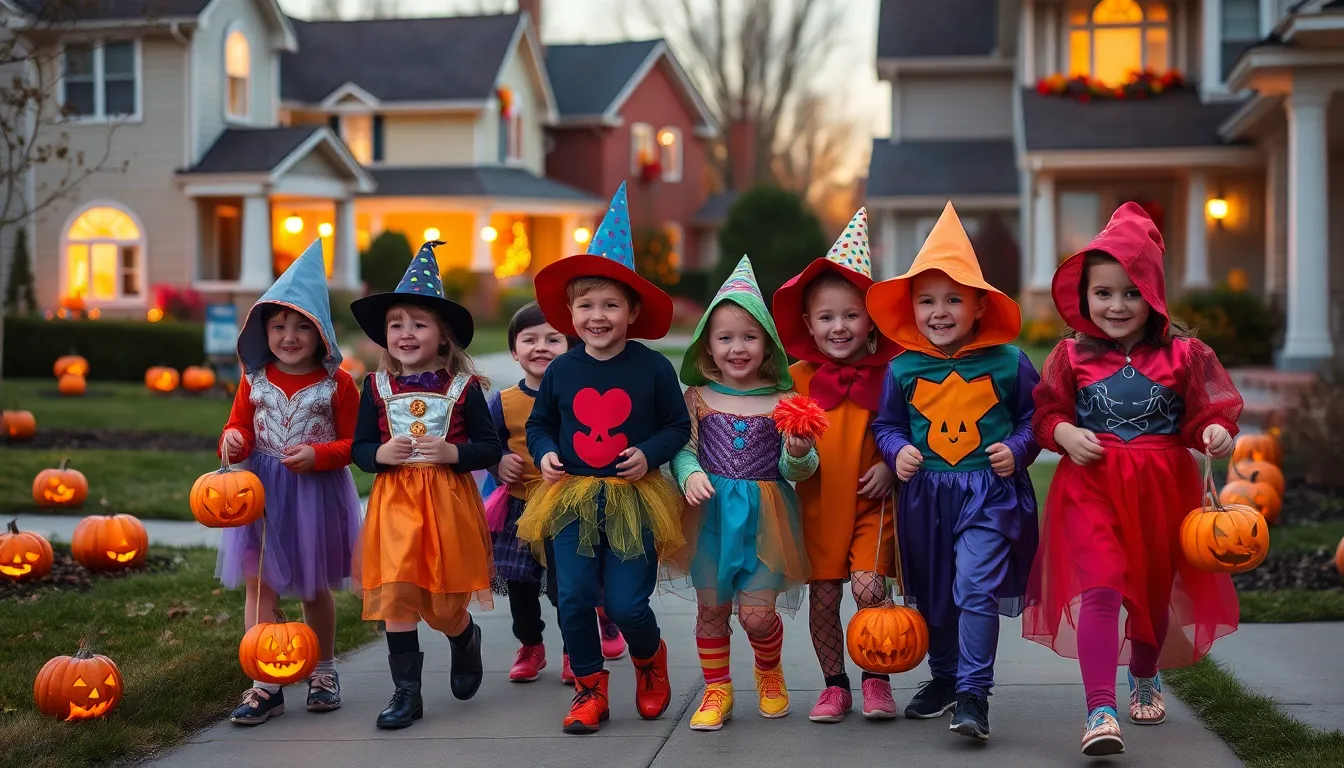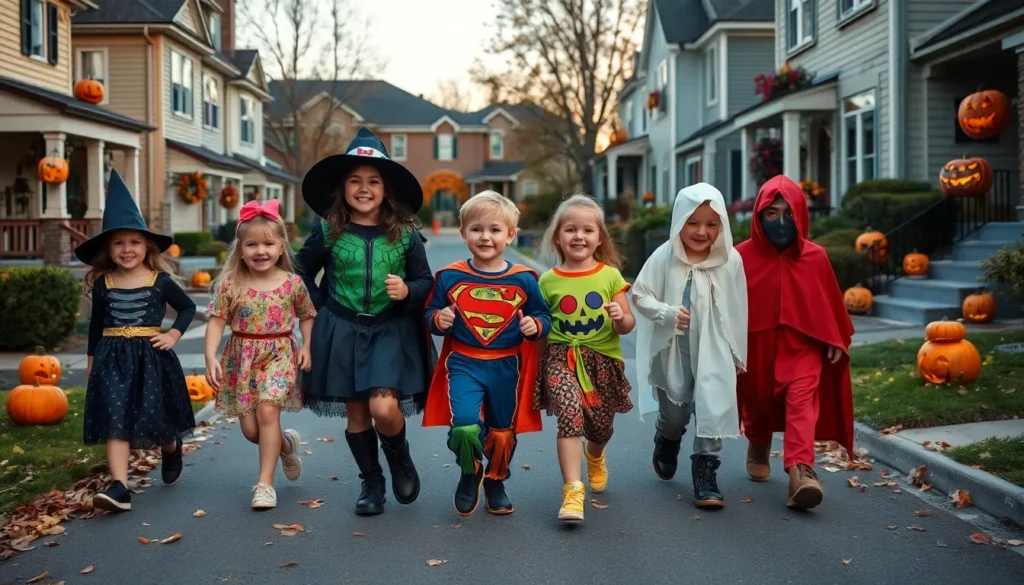Table of Contents
ToggleHalloween, celebrated on October 31st, is a time for costumes, trick-or-treating, and spooky festivities. As the excitement builds each year, many wonder about its status as a federal holiday. While it’s one of the most popular celebrations in the United States, the answer might surprise those who expect it to hold official recognition.
Unlike Thanksgiving or Independence Day, Halloween isn’t designated as a federal holiday. This distinction affects how people observe the day and the level of public participation. Understanding the implications of Halloween’s unofficial status can shed light on its cultural significance and the ways communities embrace this beloved tradition.
Overview of Halloween
Halloween, celebrated annually on October 31st, emphasizes a mix of fun, fear, and community. Rooted in ancient traditions, its modern form showcases various activities. Costumes allow individuals to express creativity, while trick-or-treating engages neighborhoods in playful interactions.
Many traditions originate from the Celtic festival of Samhain, which marked the end of harvest and the onset of winter. People believed the boundary between the living and dead blurred, leading to practices like lighting bonfires and wearing costumes to ward off spirits. Over time, these customs evolved into the Halloween celebrated today.
In the United States, Halloween ranks as one of the most popular holidays. According to the National Retail Federation, in 2022, Americans spent approximately $10.6 billion on Halloween-related expenses, including costumes, decorations, and candy.
Community events, such as haunted houses and pumpkin patches, foster local engagement. Schools often host parties, and many families decorate their homes, creating a festive atmosphere. This level of participation demonstrates Halloween’s significance beyond its non-federal holiday status, solidifying its place in American culture.
The Significance of Halloween

Halloween holds considerable cultural importance in the United States, intertwining history, tradition, and community engagement. Its popularity reflects a blend of festivities that shape local and national celebrations.
Historical Background
Halloween’s origins trace back to the ancient Celtic festival of Samhain, celebrated over 2,000 years ago. This event marked the end of the harvest season and the onset of winter. Celts believed that on the night of October 31st, the boundary between the living and the dead blurred, allowing spirits to return to earth. Customs like lighting bonfires and wearing costumes aimed to appease these roaming spirits. As Christianity spread, Samhain transformed into All Hallows’ Eve, eventually evolving into the modern Halloween. Key historical milestones include the celebration’s arrival in America in the 19th century, with Irish and Scottish immigrants bringing customs that evolved into contemporary traditions.
Cultural Impact
Halloween fosters a unique cultural identity within American society. Cross-generational traditions, such as trick-or-treating, costume parades, and community events, create bonds among families and neighborhoods. In 2022, Americans spent around $10.6 billion on Halloween-related expenditures, reflecting its economic significance. Events hosted by local organizations, including haunted houses and pumpkin patches, draw community participation, reinforcing social ties. Halloween serves as a platform for creativity, with participants expressing their individuality through costumes and decorations, while also promoting a sense of fun and playful fear. This combination of activities illustrates Halloween’s enduring influence as a significant cultural phenomenon in the United States.
Federal Holidays in the United States
Federal holidays in the United States are designated by law and result in government offices closing and many employees receiving paid time off. These holidays reflect significant historical events and observances.
Definition and Examples
Federal holidays constitute specific days recognized by the federal government where federal employees receive the day off and various institutions close operations. Examples include:
- New Year’s Day: Celebrated on January 1, marking the start of the new calendar year.
- Independence Day: Observed on July 4, commemorating the adoption of the Declaration of Independence in 1776.
- Thanksgiving Day: Celebrated on the fourth Thursday in November, honoring the harvest and the blessings of the past year.
- Christmas Day: Observed on December 25, celebrating the birth of Jesus Christ.
These holidays illustrate national values, cultural heritage, and historical significance.
How They Are Established
Federal holidays are established through legislation. Congress proposes and votes on holiday designations, followed by the President’s approval. The Uniform Monday Holiday Act of 1968 standardized the observance of several holidays on Mondays to create extended weekends. Currently, there are eleven federal holidays acknowledged in the U.S. calendar, with notable exclusions such as Halloween, which lacks federal holiday status despite its widespread cultural popularity.
Is Halloween a Federal Holiday?
Halloween, celebrated on October 31st, is not classified as a federal holiday in the United States. This distinction affects its observance, as government facilities remain open and employees do not receive paid time off for the day.
Current Status
Halloween lacks the formal designation that characterizes federal holidays. The federal government does not recognize Halloween through any legislative measures. Consequently, businesses, schools, and local governments determine their own policies regarding observance, leading to varied recognition across the country. Many communities engage in Halloween festivities, but these events operate independently of federal holiday guidelines.
State Recognition
Some states or local jurisdictions acknowledge Halloween through proclamations or community events, but these do not equate to official holiday status. Celebrations often include parades, festivals, and local gatherings, reflecting Halloween’s cultural significance rather than a legal holiday framework. Such recognition, if it exists, is generally informal and varies widely, underscoring Halloween’s status as a cultural tradition rather than a federally mandated observance.
Public Perception and Celebration
Halloween enjoys widespread popularity across the United States, characterized by vibrant public perception and diverse celebrations. Communities engage through traditional activities, with costumes and trick-or-treating serving as central elements of the festivity. Engaging in these practices fosters a sense of community and connection, as families and neighbors come together to share in the celebratory spirit.
Local organizations frequently organize events like haunted houses, corn mazes, and pumpkin carving contests. These gatherings promote creativity while providing opportunities for social interaction among residents. In 2022, Americans collectively spent approximately $10.6 billion on Halloween-related activities, illustrating the holiday’s economic impact and cultural significance.
The historical roots of Halloween contribute to its modern appeal. Its evolution from the Celtic festival of Samhain to contemporary celebrations reflects changes in cultural values and community engagement. This integration of ancient traditions into daily life reinforces Halloween as not just a holiday but a cultural phenomenon.
Celebrations vary regionally, with some areas embracing unique customs and local flavors. While the federal government does not recognize Halloween, local proclamations and community events highlight its importance to various municipalities. Such recognition reinforces Halloween’s role as a significant cultural festival without formal holiday status, emphasizing that its value lies in community participation and shared experiences.
Halloween stands as a vibrant cultural celebration that transcends its lack of federal holiday status. The day fosters community engagement and shared traditions that bring families and neighborhoods together. With roots in ancient practices and a modern twist, Halloween’s allure continues to grow, evidenced by significant consumer spending and diverse regional customs.
While it may not be officially recognized by the federal government, the spirit of Halloween thrives through local events and personal celebrations. This unique blend of history, creativity, and community connection ensures that Halloween remains a cherished occasion in American society, marking its importance beyond mere calendar recognition.







